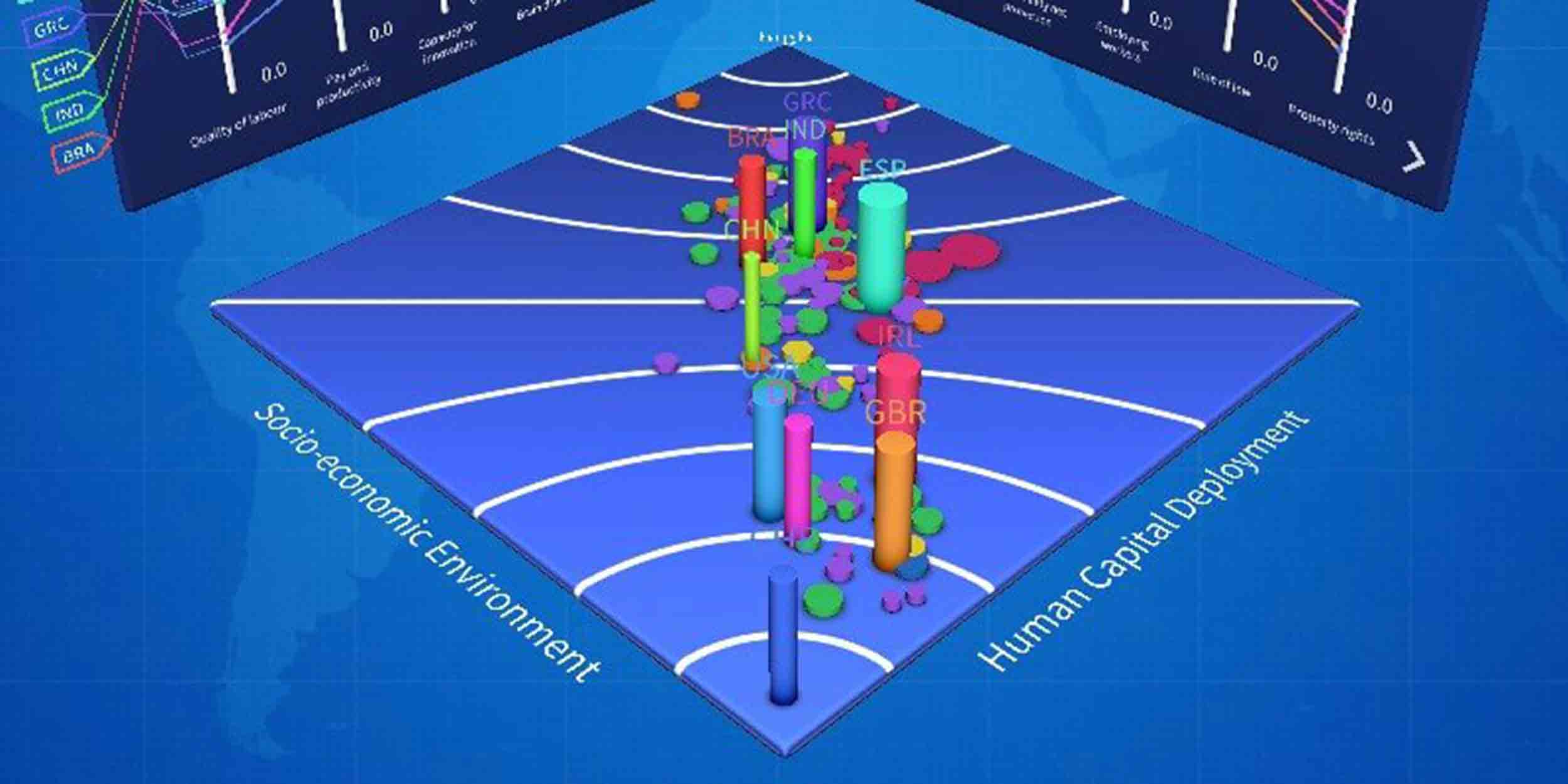Human Capital – Bridging the talent gap
Global risksArticleMarch 30, 2015
Persistent talent shortages despite rising unemployment are new risks for business and society globally
Managing a global workforce is a growing challenge for businesses with numerous intersecting risk factors, not least of which is securing the services of the talent needed to support growth and profitability.
A 2014 survey of more than 37,000 employers in 42 countries and territories by workforce experts ManpowerGroup found that “36 percent of global employers are having difficulty finding candidates with the right skills to fill open positions”.
"Talent shortages continue to persist and are impeding employers' ability to deliver value for their customers," ManpowerGroup CEO Jonas Prising said in a press release. "Due to the lack of applicants with the right technical competencies, experience and soft skills, one out of three employers struggle to fill open roles."
Among the reports other findings were that more than half of the employers surveys reported that talent shortages “significantly impact their ability to meet client needs,” while 40 percent said “shortages reduce their competitiveness / productivity.”
About 81 percent of employers surveyed in Japan, and 40 percent in the U.S., reported difficulties in filling positions. Companies in Peru, India, Argentina, Brazil and Turkey were also particularly severely affected by talent shortages.
According to the survey, the hardest positions to fill globally were skilled trades, engineers, technicians, sales representatives, accounting and finance staff, management/executives, sales managers, IT staff, office support staff, and drivers.
A growing mismatch between supply and demand
The widening skills shortage comes despite high unemployment in the aftermath of the global financial crisis which began to materialize in 2008. According to the International Labour Organization (ILO), more than 201 million are currently unemployed and that figure is expected to rise to 212 million by 2019.
“More than 61 million jobs have been lost since the start of the global crisis in 2008 and our projections show that unemployment will continue to rise until the end of the decade,” ILO Director-General Guy Ryder warned in a press release.
A host of factors, however, are contributing to the growing mismatch between available talent and the skills required by businesses. These include geopolitical issues, demographic trends and political, social and economic instability. At the same time, rapid innovation, increasingly volatile business cycles and a growing tendency towards industry clustering within a particular geography, are all making it harder for individuals, governments and businesses to make informed long-term decisions about investing in education and training.
As an example, the skills shortage in Japan can be partly attributed to population aging which is taking skilled employees out of the workforce at a faster rate than they can be replaced. Similarly, countries like Spain and Greece, where youth unemployment is excess of 50 percent, are experiencing significant de-skilling through an immigration-driven ‘brain drain’ and because young people are simply not gaining the necessary workplace experience.
Multi-variant risk factors
Global Risks 2015, a report published by the World Economic Forum in partnership with leading global institutions including Zurich Insurance Group, ranked structural unemployment and under-employment among the top 10 risks facing the world over the next five years in terms of both likelihood and impact.
The report warns that this increases the risk of social instability and can have a negative impact on “equality, employment and wealth creation. The multidirectional cause-and-effect relationship makes it harder to address the related risks.”
Using the Zurich Risk Room, an analytical tool that looks at interaction between more than 80 risk factors in 174 countries, we developed a model scenario that explores how well societies today leverage their human capital and to what extent they provide a socio-economic environment that is conducive to private and corporate investments in education & training.
One of the key learnings from this model scenario is that the drivers of talent shortages vary dramatically from country to country and that sensitivities to contributory risk factors differ significantly across different geographies.
Our model also demonstrates how talent shortages are interconnected with issues like quality of education, productivity and capacity for innovation, as well as social mobility, brain drain, and social security and welfare programs.. These and a host of other factors can lead to or perpetuate skills gaps.
How it affects business
All this has a number of implications for business. Competition for skills can push up the cost of labor, eroding margins, or even slow production. Skills shortages at suppliers might also lead to supply chain disruptions.
At the same time, dissatisfaction with high levels of unemployment, widening wage inequality, can spill over into social instability, which as we report here can be implicated in a number of other risks, up to and including war.
The vast majority of the companies facing talent shortage in the ManPower survey were pursuing some kind of strategy to address the issue, with only 22 percent stating that they were taking no action. Nearly half of the business implementing measures to bridge the skills gap were pursuing alternative people strategies, investing in things like training and development for their staff and new recruitment strategies. A quarter were exploring new talent sources, and a further 23 percent were introducing new work models.
While these initiatives can help to ease skills pressure, companies need to go far further. The management of human capital as a resource needs to be integrated into every business’ group risk management approach, so that senior executives can take a long view on current and future skills needs.
Furthermore, this needs to extend far beyond the walls of individual companies, to include suppliers, competitors and government representatives, in order to build reliable, long term, strategic mitigation plans for all the risk factors that may play a part in the future supply of labor.
Disclaimer: Views expressed on this page and in the reports are not necessarily those of the Zurich Insurance Group, which accepts no responsibility for them

